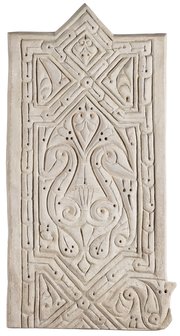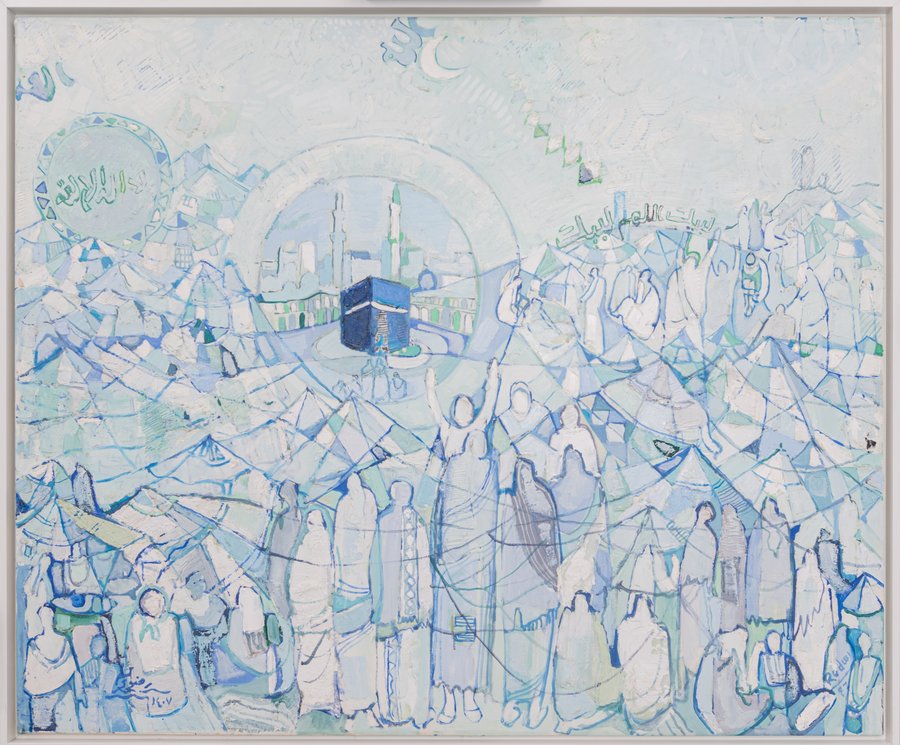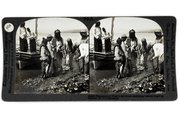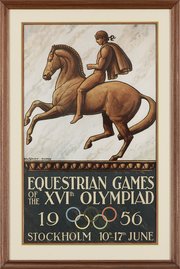
Hajj Day
Mathaf: Arab Museum of Modern Art
- Title:
- Hajj Day
- Artist:
- Abdulhalim Radwi
- Date:
- 1987
- Title:
- Hajj Day
- Artist:
- Abdulhalim Radwi
- Date:
- 1987
- Material:
- Oil paint, Cotton, Wood
- Technique:
- Painting
- Dimensions:
- 104.4 × 104.4 × 4 cm
Abdulhalim Radwi often evoked his hometown of Mecca, emphasising the importance of the Ka’ba as a source of universal energy and a religious symbol.
In Hajj Day, the Ka’ba is surrounded by a central circle around which various elements of the composition revolve. The artist manipulates perspective so that near and far elements converge and intersect around the Ka’ba. Facial features are absent, and the artist has stripped the city of Mecca of all detail except for the main elements - the Ka’ba, the overlapping mountains and the pilgrims coming for the Hajj.
In contrast to his colourful scenes, Radwi removes the vibrant colours in this work, opting for a monochrome palette to emphasise the unity of the elements under this universal energy. In his series depicting Mecca, the artist emphasises the importance of Mecca as a place of peace, where there is no difference between people, who are all there for the same reason regardless of their cultures or social status.
Radwi often uses Arabic words and letterforms in his artwork, including religious expressions such as Allah; bismillah, or 'in the name of God'; and la illah ila Allah, or 'there is no god but God'), as well as other Arabic expressions. This demonstrates Radwi's commitment to incorporating an Arab and Muslim identity into his work. In addition, his continued use of visual symbols such as crescents and other motifs underlines the importance of these symbols as signs of cultural heritage.



